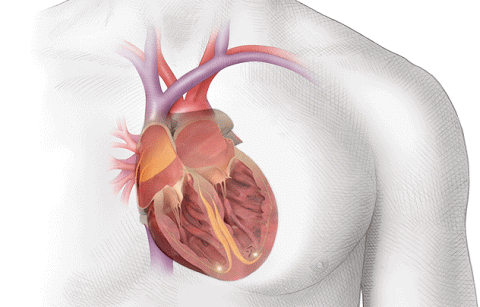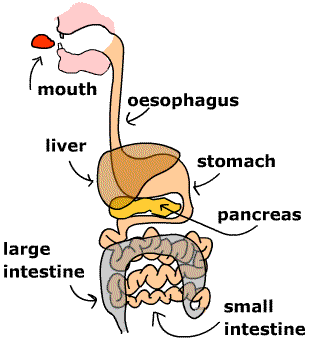The use of neodymium magnets in medical care and its impact on health
The strong
magnetic properties of magnets have led to their use in many modern
technologies, as well as in the medical and dental fields. Neodymium magnet is
a powerful magnet that has become the subject of recent research. This article
briefly describes the definition, history and characteristics of rare earth
magnets. In addition, a broad overview of the results obtained so far in the
study of the effects of magnets, especially neodymium magnets on human systems,
tissues, organs, diseases and treatments is provided. Although they are used in
various diagnostic equipment and treatment tools in the health sector, there
are still potential harmful effects and accident risks. This research is still
not enough. However, neodymium magnets have broad prospects in diagnosis and
treatment.
Neodymium
is a chemical element that was discovered in 1885. This element (atomic number
60) has a silver-white metallic color and belongs to the lanthanide element,
which is a subset of the lanthanide elements (atomic number 57-71). The
periodic table oxidizes rapidly in the air. Lanthanides play an important role
in the development of new technologies, such as wind turbines, electronic
hybrid vehicles, and the defense industry.
In
nature, neodymium does not exist in the form of metals or mixed with other
lanthanides, but can be used for general purposes after refining, and has been
mainly mined in the United States, Brazil, India, Australia, Sri Lanka and
China.
NdFeB
magnets were developed by General Motors and Hitachi in the 1980s. Because it
provides high magnetic force even in small amounts, its role is becoming more
and more important in the manufacture of strong permanent magnets composed of
rare earth elements. In the field of information technology, neodymium magnets
are especially used in video and audio systems for hard disk drives, mobile
phones, and televisions.
Neodymium
magnets are also commonly used in the production of magnetic separators,
filters, ionizers, switch buttons, safety departments and safety systems.
Grease filter manufacturers use neodymium magnets in metal separators to filter
out iron powder in oil more efficiently. In addition, they are also very useful
in covering machines, cars with awnings, and in the production of magnetic tool
belts. They are also used in the production of jewelry clips, identification
badges, and strollers that are secured to the basket by magnets.
The
health department is another area where neodymium magnets are integrated into
medical equipment (such as magnetic resonance imaging equipment), which can
diagnose and treat chronic pain syndrome, arthritis, wound healing, insomnia,
headaches and several other diseases (due to Its ability to generate static
electricity) magnetic field. In the past decade, people have observed an
increase in their use [2]. These magnets are considered to have a curing
effect, so they are sometimes referred to as "magnets".
NASA
uses neodymium magnets to maintain astronaut muscle tension during space
flight.
Neodymium
magnets have push-pull force and have been used as motion generating devices in
orthodontic treatment. Molar distillation and lat expansion.
According to
reports, the static magnetic field can stimulate bone formation through the
differentiation or activation of osteoblasts.

In a
study conducted in 2004, it was reported that laser Doppler significantly
reduced the blood flow and skin blood perfusion (SBF) of the second and fourth
fingers of the non-dominant hand of the neodymium magnet pole.
Another
study showed that the neodymium magnetic field increases the microcirculation
of the nail bed, although this study conflicts with other studies.
According
to reports, the flow of red blood cells in skeletal muscle capillaries exposed
to a strong static magnetic field is reduced. The microcirculation in the tumor
is characterized by tortuous microvessels, chaotic structure, and unstable
blood flow. One study reported that tumors treated with static magnetic fields
had decreased blood flow and blood vessel density. In the same study, studies
showed that platelet activation and adhesion increased in non-tumor skeletal
muscle exposed to static magnetic fields. The magnetic field produced by
neodymium magnets is believed to increase microcirculation, but the effect on
this is unclear.
In one
study, a special device was placed on the back of the experimental mice by
surgery. One neodymium magnet is assembled on the device, and the other is
assembled with non-magnetic disks of equal size and weight. The diameter of
small arteries and veins in mice affected by the static magnetic field
generated by neodymium magnets has been shown to be greatly reduced.
Another
study conducted in 2015 was to cut and reconstruct the dog's portal vein. One
group used traditional manual sutures for anastomosis, and the other group was
covered with a ring composed of neodymium magnets. In the latter, recovery
lasted for a relatively short time, and the intima was smoother and formed
regularly than the former.
Bipolar
ablation catheters, unipolar ablation catheters, and bipolar catheters with
magnets have been tried in thick and tight tissues. In these tissues, it is
difficult to form full-thickness lesions like the left ventricular wall. It was
found that the thickness of the transmural channels and lesions formed by the
magnetized bipolar catheter was higher than that of other catheters.

Magnets
can be used to generate magnetic fields in the study of neural electrical
activity. In a study, the effect of the magnetic field generated by neodymium
magnets on nerve damage was studied and applied to 17 healthy volunteers for 2
hours. Neuron-specific enolase (a factor that determines neuronal damage and
S100 blood levels) was studied, and a test was conducted to measure mental
ability. The test showed that the parameters tested on 17 volunteers were not
affected by the magnetic field and seemed Neodymium magnets can be used to
generate magnetic fields to ensure the safety of these parameters.
Recurrent
transcranial magnetic stimulation (rTMS) is a recognized and effective
treatment for major depression. Synchronous TMS (sTMS) is an improved form of
rTMS and has also tried to deal with it. A study conducted in 2014 showed that
although the incidence of severe depression and patients receiving sTMS
decreased by 48%, it decreased by 19% in the control group. This difference was
statistically significant. Neodymium magnets are used in TMS to generate a
magnetic field. In contrast to electroconvulsive therapy for severe depression,
TMS does not require anesthesia. In addition, another study conducted in 2015
showed that the use of sTMS can effectively treat major depression.
Placing
magnets on the upper and lower eyelids has achieved successful results in the
treatment of blepharitis.
Alternative
treatments including magnetic therapy have been studied for climacteric
vasomotor symptoms, and they have been found to be ineffective in treating these
symptoms.
In another study, to ensure the glottic aperture of the bilateral vocal cord paralysis, the magnet was placed in the sheep's throat in vitro, and the gap was enlarged. The device provides a suitable glottal aperture that benefits from the magnet and can be used in the future.

The effects of neodymium magnet implants and non-magnetic implants placed in the tibia of rabbits on bone tissue were compared. The magnetic implant enhances the medulla and cortex around the bone tissue, and the increase in medulla is statistically significant.
In another study using the trabecular trabecular injury rabbit model, a magnetic stent was placed in the damaged region of the distal femur bone, and a cylindrical neodymium magnet (NdFeB) was placed in the nearby area. At the end of the experiment, it was found that NdFeB prevents micro-movement by keeping the magnetic scaffold constant, which is important for maintaining normal tissue regeneration.
In a randomized double-blind placebo-controlled study, the curative effect of neodymium magnets on osteoarthritis symptoms was studied. Participants tried four types of wristbands. In the comparison process, magnetic neodymium wristbands were used as experimental equipment, and low magnification, demagnetized and copper wristbands were used as control equipment. The WOMAC Osteoarthritis Index, McGill Pain Questionnaire-Pain Score Index (PRI), visual analog scale, and drug intake were evaluated. Among these scales, only the PRI subscale shows statistically significant differences. The therapeutic benefits of the wristband can be attributed to the placebo effect. These devices have no major adverse effects and can therefore be used for placebo effects.
In another study, the difficulty of forming a control group to test magnetic bracelets solved the problem of providing weak control wristbands to the control group, because participants can test the strength of the wrists and may not be able to effectively relieve the pain of arthritis.
In a study investigating the role of static magnetic fields in carpal tunnel treatment, the effects of two different magnetic field levels on the median nerve were evaluated. In a randomized double-blind placebo-controlled study, 12 weeks of observation were performed after 6 weeks of intervention. Participants diagnosed with carpal tunnel syndrome using electrophysiological tests wear neodymium magnets and non-disks all night long. A Boston Carpal Tunnel Questionnaire, Symptom Severity Score (SSS), Functional Severity Score (FSS) and four parameters measuring median nerve activity were used. These parameters include distal sensory latency, sensory nerve action potential amplitude, distal motor latency and compound motor action potential amplitude. There was no significant difference in median nerve conduction between SSS and FSS between the groups. Both groups of SSS and FSS recovered symptoms within 6 weeks. Symptom changes in disk groups and non-disk groups all occur in the same direction and size.
In two systematic reviews conducted in 2012, magnetic wristbands and several other alternative therapies were examined for arthritis, citing the lack of sufficient research on the subject and the conclusion that there was no consistent evidence that the drug Rheumatoid arthritis and osteoarthritis are effectively treated.
In one study, the effect of static magnetic fields on delayed-onset muscle soreness was no different from placebo.

In a study conducted in 2012, neodymium magnets were used to fix colon tumors identified by endoscopy. In the process of laparoscopic surgery without using tools such as fluorescence or ultrasound, magnets are used to easily enter the tumor. Twenty-seven of the 28 patients (96%) successfully completed localization of obvious lesions during surgery.
In an animal study, the endoscope used a ring magnet to perform magnetic compression anastomosis (magnamosis) and placed it opposite each other in the target area. Magnets have also been used in humans through surgery. Between 2009 and 2011, 44 laparoscopic surgeries were performed on pediatric patients, including cholecystectomy, gastrojejunostomy, and splenectomy. Magnetic forceps were used to safely remove unwanted tissue in the surgical area.
Previous studies of swallowing magnets have documented life-threatening injuries, including fistulas and perforations, especially in children. In two studies comparing the number and size of magnets swallowed by children in 2002–2009 and 2010–2012, the number of cases involving more than one magnet increased, while the size of swallowing magnets decreased, but all cases required Surgical intervention. This result is attributed to the increased availability of children ’s magnets in daily life. These findings suggest that using magnets instead of safety pins may be particularly harmful to children. The North Atlantic American Pediatric Gastroenterology, Hepatology, and Nutrition Society advocated the ban on the sale of strong magnets including neodymium, but they said in 2014 that these efforts were not effective enough.



